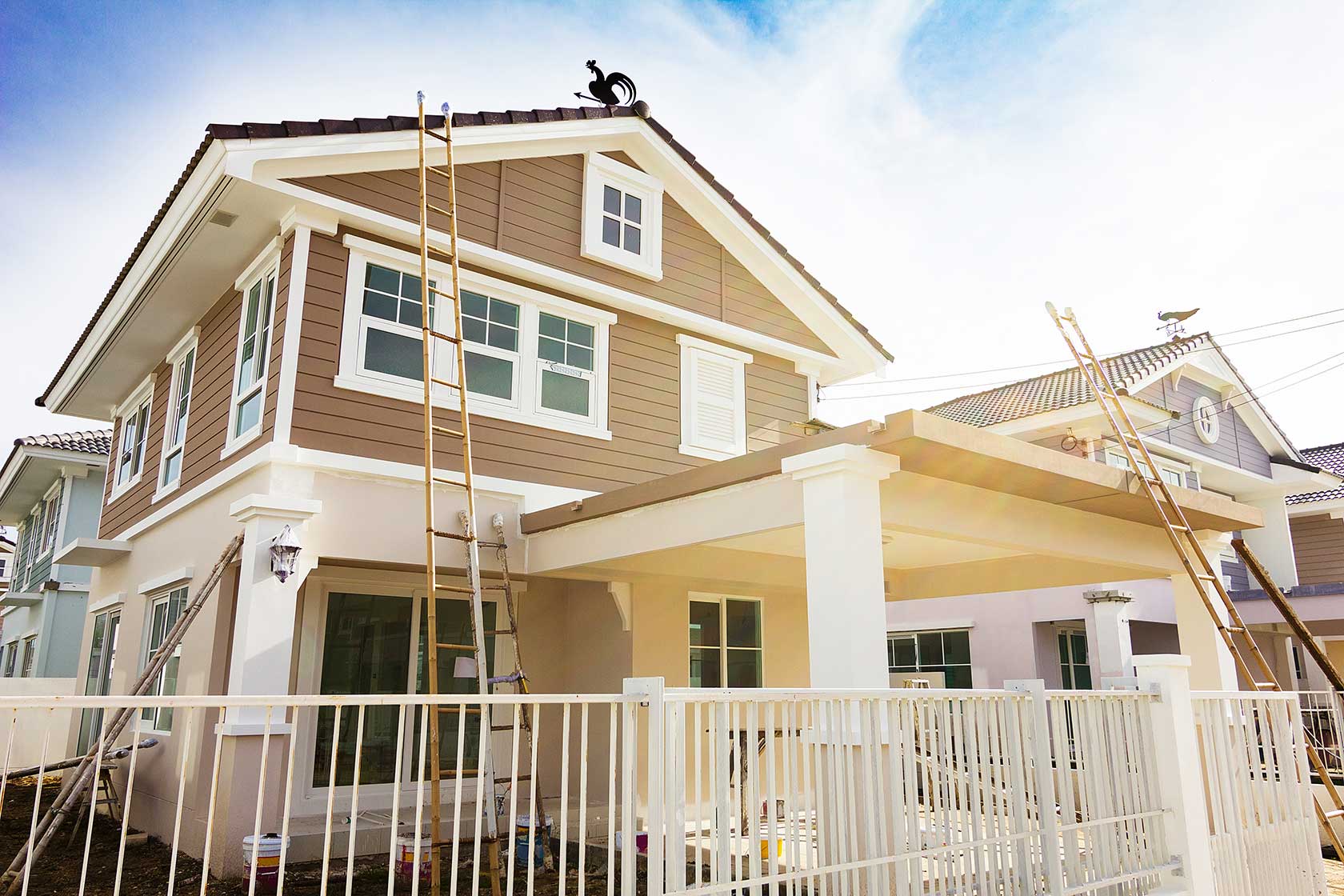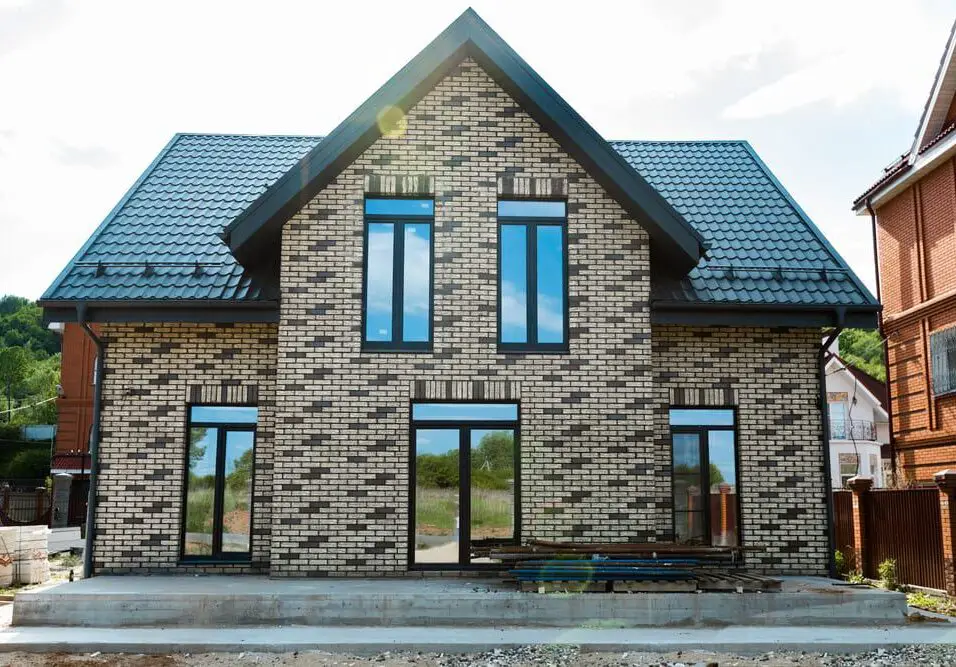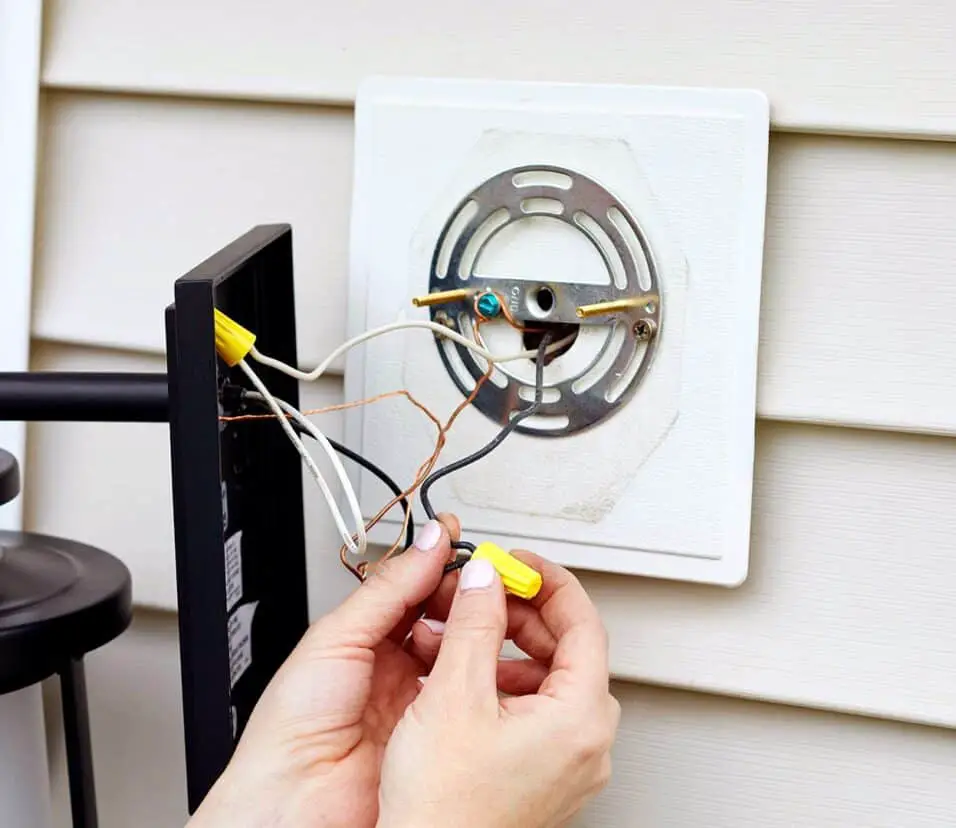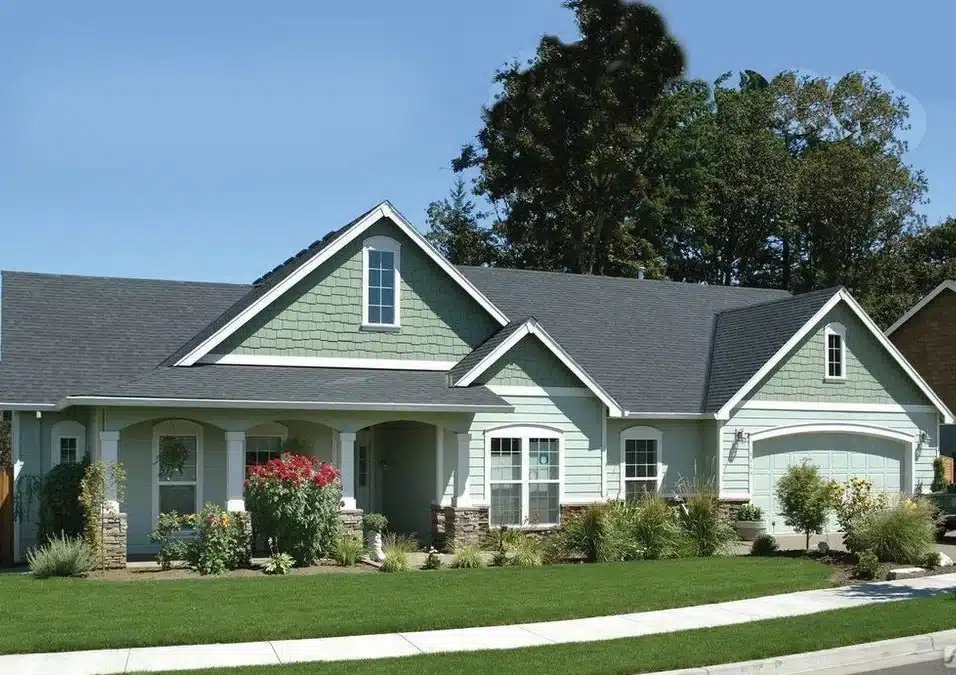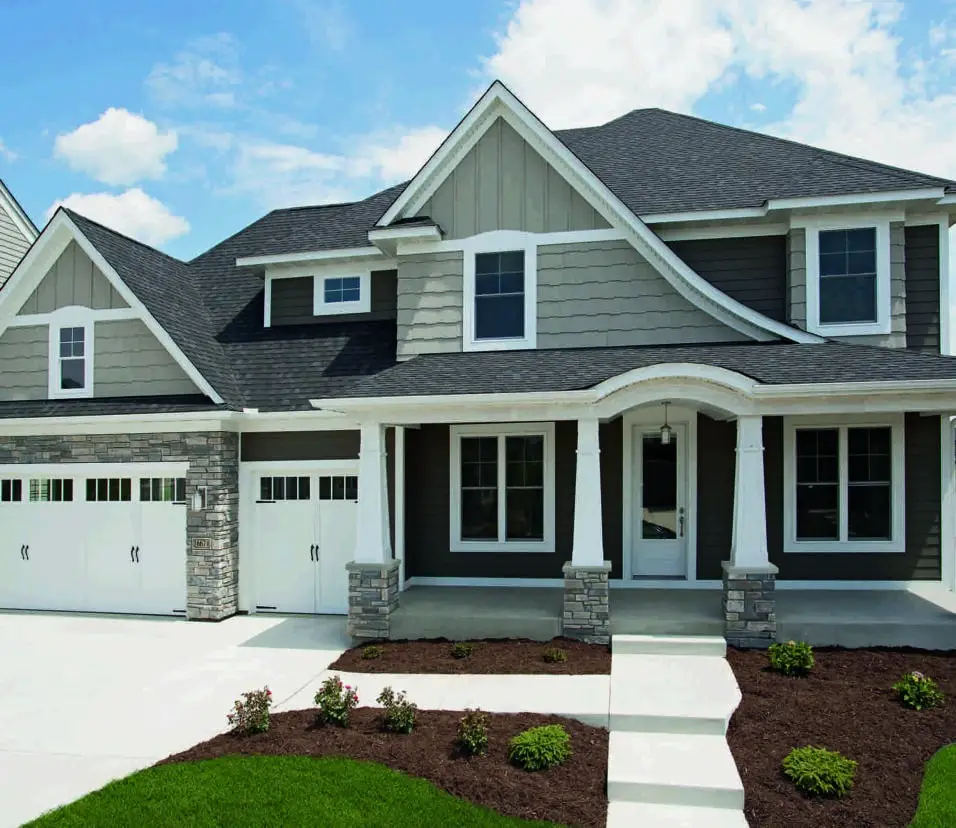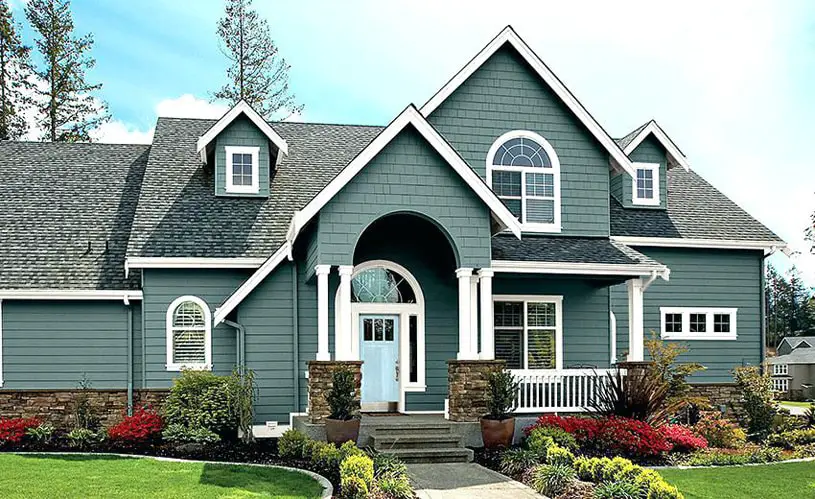How Often To Paint House Exterior
Introduction
How Often To Paint House Exterior: Painting the exterior of your house is an essential part of home maintenance. Not only does it enhance the curb appeal of your property, but it also protects the exterior surfaces from the elements. However, one common question that homeowners often ask is how often they should paint the exterior of their house. The answer to this question depends on several factors, including the type of siding, the climate in your area, and the quality of the previous paint job.
The climate in your area is another important factor to consider when deciding how often to paint your house exterior. Extreme weather conditions, such as intense sunlight, heavy rain, or freezing temperatures, can cause paint to deteriorate more quickly. If you live in an area with harsh weather, you may need to repaint your house more frequently to ensure that it remains protected and looks its best.
The quality of the previous paint job also affects how often you should repaint your house exterior. Signs of a deteriorating paint job include peeling, cracking, or fading paint. If you notice any of these signs, it’s time to repaint your house to prevent further damage and maintain its appearance.
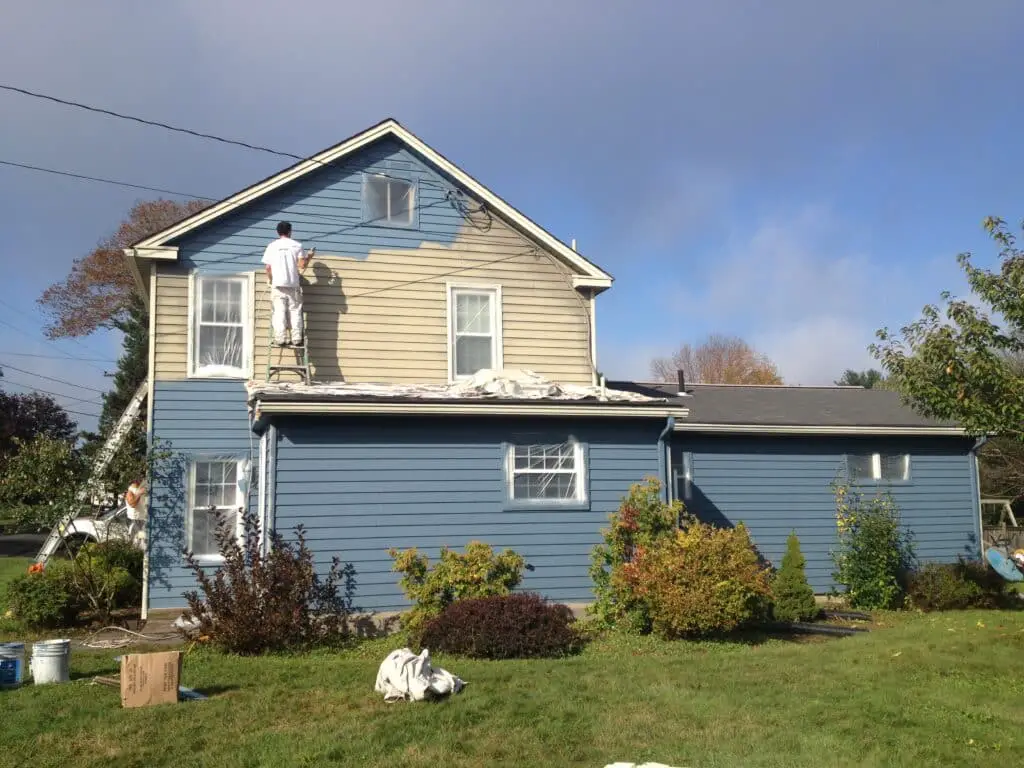
Can exterior paint last 20 years?
There are many variables to determining how long a paint job will last like the quality of the paint and the condition of the surface you’re painting. In general, interior paint will last from 5 to 10 years. You can expect your exterior paint to last between 5 to 7 years.
Exterior paint is an essential component of any building’s aesthetics and protection against the elements. It not only enhances the curb appeal of a property but also acts as a barrier against moisture, UV rays, and other environmental factors that can damage the underlying structure. However, the longevity of exterior paint largely depends on various factors such as the quality of paint used, the preparation of the surface, and the maintenance practices followed.
The quality of paint: They also have better adhesion properties, ensuring that the paint adheres well to the surface and doesn’t chip off easily. Investing in a premium quality paint can significantly increase the lifespan of the exterior paint.
Surface preparation:
Proper surface preparation is crucial for the longevity of exterior paint. A well-prepared surface ensures better adhesion and prevents moisture from seeping into the underlying structure, which can cause paint failure.
Maintenance practices: Regular maintenance plays a vital role in extending the lifespan of exterior paint. Periodic cleaning, inspection for any signs of damage, and timely touch-ups can help prevent minor issues from escalating into major problems. Additionally, protecting the painted surface from excessive moisture, direct sunlight, and harsh weather conditions can also contribute to the longevity of the paint.
While exterior paint can last for 20 years or more, it is essential to consider the quality of paint, surface preparation, and maintenance practices. By investing in high-quality paint, properly preparing the surface, and following regular maintenance routines, homeowners can ensure that their exterior paint remains vibrant and protective for an extended period.
Can you paint over old outdoor paint?
The short answer is no. You do not need to remove all exterior paint before repainting. However, there are some situations where removing all exterior paint is necessary. If the old paint is peeling or flaking, then it is best to remove all the paint.
Yes, it is possible to paint over old outdoor paint. However, there are a few factors to consider before doing so. First, you need to assess the condition of the existing paint. If it is peeling, cracking, or chipping, it is important to remove it before applying a new coat of paint. This can be done by scraping or sanding the old paint off the surface.
Mixing different types of paint can lead to poor adhesion and durability.
Before painting over old outdoor paint, it is important to clean the surface thoroughly.
This can be done by using a pressure washer or a mixture of water and detergent. Removing dirt, grime, and mildew will ensure better adhesion of the new paint. Additionally, it is important to repair any damaged areas, such as cracks or holes, before painting.
Once the surface is clean and prepared, it is time to apply the new coat of paint. This will ensure better durability and protection against weather elements. It is also important to apply the paint evenly and follow the manufacturer’s instructions regarding drying time and number of coats.
Painting over old outdoor paint is possible, but it requires proper preparation and consideration of the existing paint condition and type. By following the necessary steps, you can achieve a fresh and long-lasting paint job for your outdoor surfaces.
How frequently should one paint a house?
While it differs from room to room due to varying degrees of traffic and usage, the general rule is you should repaint your house interior every 3-5 years. Keep in mind that not every household is the same.
When it comes to maintaining the appearance and condition of a house, painting plays a crucial role. Over time, the paint on the exterior and interior walls of a house can fade, chip, or become outdated. This raises the question of how frequently one should paint their house to keep it looking fresh and well-maintained.
The frequency of home painting varies on the type of paint, the climate, and the paint’s condition. Painting a house’s exterior every 5-10 years is advised. This varies by paint quality and housing exposure to extreme weather.
In regions with extreme weather conditions,
Such as areas with high humidity or frequent exposure to sunlight, the paint on the exterior walls may deteriorate more quickly. In such cases, it may be necessary to repaint the house more frequently, perhaps every 3-5 years. On the other hand, houses located in milder climates may require less frequent repainting.
Another factor to consider is the type of paint used. High-quality paints tend to last longer and require less frequent repainting compared to lower-quality paints. Investing in a good quality paint can save homeowners both time and money in the long run.
The frequency of painting a house’s interior walls depends on wear and tear, children or pets, and personal preference. To keep interior walls clean, repaint them every 5-7 years. If walls are significantly stained or damaged, repainting may be needed sooner.
How many years should house paint last?
Type of Paint Average Lifespan
Latex paint 2 – 10 years
Acrylic paint 2 – 15 years
Chalk paint 1 – 5 years
Milk paint, mixed from powder form 1 – 7 days
When it comes to house paint, durability is a key factor to consider. Homeowners want to ensure that their investment in painting their house lasts for a significant amount of time. However, the lifespan of house paint can vary depending on several factors.
Does Paint Go Bad?
Firstly, the quality of the paint itself plays a crucial role in determining its longevity. These paints often come with a warranty that guarantees their performance for a certain number of years. On the other hand, lower-quality paints may not last as long and may require more frequent touch-ups or repainting.
Second, the surface being painted can affect paint longevity. However, painting over a dirty or damaged surface might cause early paint failure.
Thirdly, the climate and weather conditions in the area where the house is located can affect the lifespan of the paint. Extreme temperatures, high humidity, and exposure to harsh sunlight can all cause paint to deteriorate more quickly. In regions with harsh weather conditions, it may be necessary to repaint more frequently to maintain the appearance and protection of the house.
Lastly, proper maintenance and care can significantly extend the lifespan of house paint. Regular cleaning, inspection for any signs of damage or wear, and timely touch-ups can help prevent small issues from becoming larger problems. Additionally, using a clear topcoat or sealant can provide an extra layer of protection and prolong the life of the paint.
What is the best month to paint a house?
Summer is generally regarded as the best season to experiment with paints for your homes. With the warmth of the sun and no rains, the chosen paint colours can dry at the earliest. However, it is crucial to note that not all summer months offer the best conditions.
Choosing the best month to paint a house can greatly impact the overall success and longevity of the paint job. Factors such as weather conditions, temperature, and humidity levels all play a crucial role in determining the ideal time to undertake this task. While there is no one-size-fits-all answer to this question, there are certain months that are generally considered more favorable for painting.
Spring and fall are often regarded as the best seasons for house painting.
During these months, the weather tends to be mild, with moderate temperatures and lower humidity levels. This combination creates optimal conditions for paint to dry and adhere properly to the surfaces. Additionally, spring and fall offer a good balance between sunny and overcast days, which allows for consistent drying and curing of the paint.
Summer can also be a suitable time for painting, especially in regions with cooler climates. However, it is important to consider the extreme heat and high humidity that can be present during this season. These conditions can cause the paint to dry too quickly, leading to poor adhesion and a less durable finish. To mitigate these risks, it is advisable to paint early in the morning or late in the afternoon when temperatures are lower.
Winter is generally not recommended for exterior house painting, particularly in areas with freezing temperatures. Cold weather can prevent paint from drying properly and can even cause it to freeze, resulting in a subpar finish. However, if you live in a region with mild winters, painting during this time may be feasible. It is crucial to choose a day with temperatures above freezing and to allow sufficient time for the paint to dry before any potential frost or snowfall.
The best month to paint a house depends on various factors such as weather conditions
Humidity and temperature. Due to temperate weather and moderate humidity, spring and fall are ideal for house painting. Summer works, but avoid extreme heat and humidity. Winter is not suggested in cold temperatures, however moderate winters may be possible. In the end, you must evaluate your location and determine a time that will work best for your paint job.
The recommended frequency for painting the exterior of a house depends on several factors, including the type of paint used, the climate in which the house is located, and the condition of the existing paint. However, as a general rule of thumb, it is recommended to repaint the exterior of a house every 5 to 10 years.
Regular maintenance and inspection of the paint condition can help determine when it is time for a fresh coat. Factors such as fading, peeling, cracking, or chipping paint are indicators that it may be time to repaint. Additionally, harsh weather conditions, such as extreme heat or cold, can accelerate the wear and tear on the paint, requiring more frequent repainting.
It is important to note that proper preparation and application of paint can also extend the lifespan of the exterior paint job. Regular cleaning, repairing any damaged areas, and using high-quality paint can help ensure a longer-lasting finish. Consulting with a professional painter or following the manufacturer’s recommendations for the specific paint product can provide more accurate guidance on the recommended frequency for painting the exterior of a house.
How frequently should I repaint the exterior of my house?
The recommended frequency for painting the exterior of a house depends on several factors such as the type of paint used, the climate in which the house is located, and the condition of the existing paint.
Regular maintenance and inspection of the paint condition can help determine if repainting is necessary sooner. Factors such as fading, peeling, cracking, or chipping paint are signs that it may be time to repaint.
It is important to note that proper preparation and application of paint can significantly extend the lifespan of the paint job. This includes thorough cleaning, repairing any damaged surfaces, and using high-quality paint products. Regular maintenance and touch-ups can also help prolong the time between full repaints. Consulting with a professional painter or following the manufacturer’s recommendations for the specific paint used can provide more accurate guidance on the ideal interval between painting the exterior of a house.
What is the ideal interval between painting the exterior of a house?
When it comes to painting the exterior of a house, the ideal interval between paint jobs can vary depending on several factors. These factors include the type of paint used, the climate in which the house is located, and the condition of the existing paint. However, a general rule of thumb is to repaint the exterior of a house every 5 to 10 years.
The frequency of repainting can be influenced by the quality of the paint used. High-quality paints tend to last longer and require less frequent repainting compared to lower-quality paints. Additionally, the climate plays a significant role in the durability of the paint. Houses located in areas with extreme weather conditions, such as intense sunlight or heavy rainfall, may require more frequent repainting.
Regular maintenance and inspection of the exterior paint can help determine the need for repainting. It is important to keep an eye out for signs of paint deterioration, such as peeling, cracking, or fading. If these signs are present, it may be time to consider repainting. Additionally, if you notice any damage to the exterior of your house, such as wood rot or water damage, it is essential to address these issues promptly to prevent further damage and ensure the longevity of the paint job.
How often should I consider repainting the outside of my house?
When it comes to repainting the exterior of your house, the recommended frequency can vary depending on several factors. However, a general rule of thumb is to repaint the outside of your house every 5 to 10 years. This timeframe takes into account the typical wear and tear that occurs due to weather conditions, exposure to sunlight, and other environmental factors.
It’s important to note that certain regions may require more frequent repainting due to harsher weather conditions, such as areas with high humidity or extreme temperature fluctuations. Additionally, the type of paint used and the quality of the initial application can also impact the longevity of the paint job.
To determine if your house is due for a fresh coat of paint, it’s recommended to regularly inspect the exterior for signs of peeling, cracking, or fading. These are indications that the paint is deteriorating and may no longer provide adequate protection for your home. By addressing any necessary repainting in a timely manner, you can help maintain the appearance and integrity of your house for years to come.
What is the general rule of thumb for how often to paint the exterior of a house?
The general rule of thumb for how often to paint the exterior of a house is every 5 to 10 years. However, this can vary depending on several factors such as the climate, the quality of the previous paint job, and the type of siding on the house.
In areas with harsh weather conditions, such as extreme heat or cold, the paint on the exterior of a house may deteriorate more quickly. In these cases, it may be necessary to repaint the house more frequently, perhaps every 3 to 5 years.
Additionally, if the previous paint job was of poor quality or if the siding on the house is prone to fading or peeling, it may be necessary to repaint sooner. Regular maintenance and inspections can help identify any signs of wear or damage and determine if repainting is necessary.
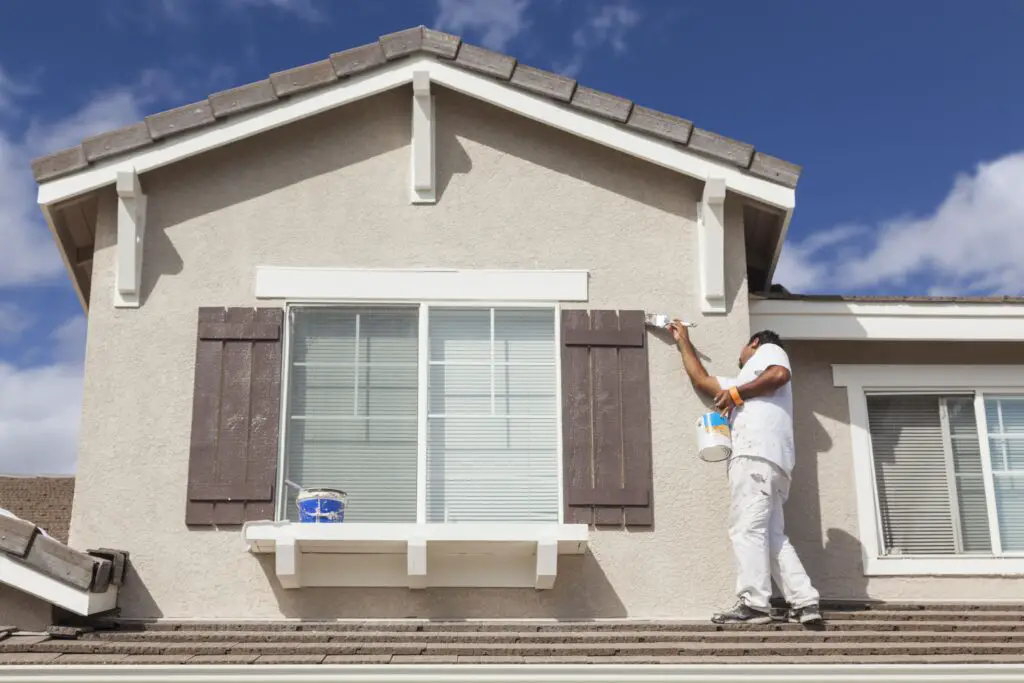
Conclusion
The frequency at which you should paint the exterior of your house depends on various factors such as the type of paint used, the climate in your area, and the overall condition of the paint job. However, there are certain signs that indicate the need for more frequent painting, such as peeling or cracking paint, fading color, or visible damage.
The type of paint used on your house also plays a significant role in determining how often you should repaint. High-quality paints tend to last longer and require less frequent repainting compared to lower-quality paints. Additionally, the climate in your area can affect the lifespan of your exterior paint. If you live in an area with extreme weather conditions, such as intense sunlight or heavy rainfall, you may need to repaint more frequently to ensure the longevity of your paint job.
It is important to regularly inspect the exterior of your house for any signs of paint deterioration. Ignoring these signs can lead to more extensive and costly repairs in the future.
While there is no one-size-fits-all answer to how often you should paint exterior of your house, it is generally recommended to repaint every 5-10 years. Regular inspections and prompt repairs can help prolong the lifespan of your exterior paint and maintain the overall appearance of your house.



